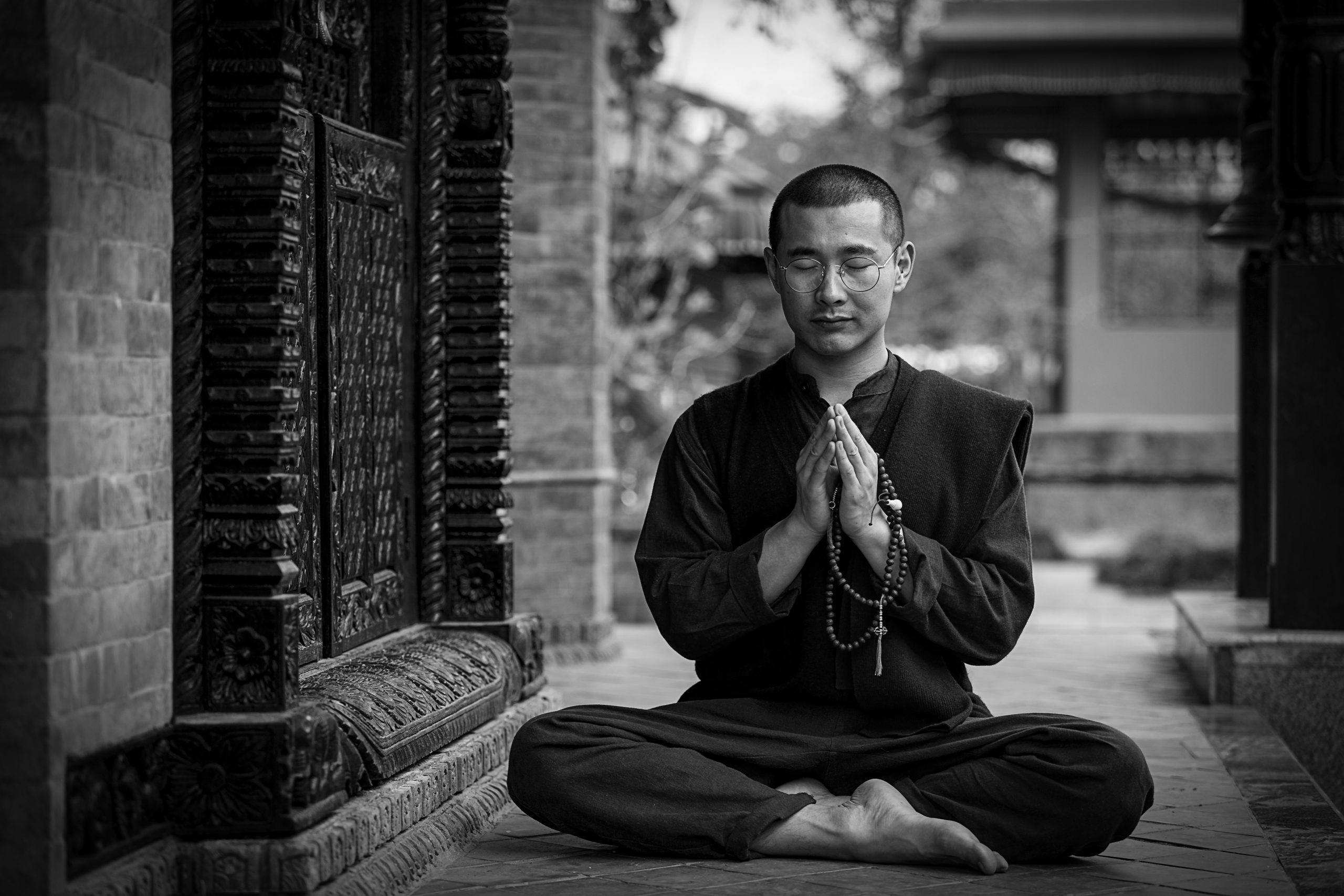“The point is, that there is one method of working from the inside which gives you the same wonderful results as lots of efforts done from the outside. These outside methods are the poses, which you are learning, or things like special ways of breathing; all of them aimed at releasing the inner winds from the places where they are choked, so they can be stored up instead within the middle channel. And this inner method, it’s not thinking about nothing; it’s thinking about something, on purpose, in a very focused and happy way.” – “How Yoga Works” Geshe Michael Roach
Years ago, before I started seeing a therapist and doing all the growth related stuff, I could not meditate or even sit still. Every time I would go to the church, all the distractions would go away and I would be left with quite a strong set of emotions, which were waiting to be experienced. About five minutes after sitting down, I would start crying. Everyone around would be staring at me. Some would even hush me to be quiet. Church is not a place for inner struggles. Meditation pillow is 🙂
“If you are meditating and a devil appears, make the devil meditate too.” – A. Jodorowsky
Learning from trauma therapy, it is good to have an anchor. At times, it may be good to have an actual person that would sit with us, or at least someone online leading the meditation. Especially if our “self” has been crushed in our short years (see Lowen’s schizoid or oral personality types). But most of the time, an object, any kind of external reference would suffice, like breath, palo santo or incense. The purpose of this is being reminded of the present. You see, when we take away all the distractions, ruminations, obsessions, we are exposed to the sensations from our bodies and emotions. These may be challenging to process. They may resemble past situations, when we were not able to process them, and saved them for later. Suppressed thoughts or emotions are still present in the brain. They may be really uncomfortable, or even painful. It is easy to get trapped in the past feelings, and get overwhelmed by them. But the past belongs to the past. Once we let ourselves feel, without judgement, we release all that by feeling and letting it go.
How to?
There are different types of meditation, but I like to keep it simple. So sit down, set your timer on, preferably everyday, and try focusing on your breath for ten minutes or so. Try not to get upset when you find yourself lost in thought. It will come, when you are ready. The goal of this exercise is to keep trying. I keep getting distracted all the time. At times I even realise I have been lost in thought for the whole ten minutes. Then I repeat my ten-minute-attempt to meditate. Or not 🙂
Meditation and therapy
Most studies on the matter are praising meditation, its benefits to the chemical balance of the brain, antidepressive influence, etc. Some provide mixed results. Most suggest meditation promotes awareness and setting healthy boundaries. Loving kindness meditation or metta may be helpful in developing empathy or compassion, which is supposed to help with narcissism. However, very short meditation without compassion does seem to provide little benefit to those with impaired empathy. I guess meditation alone is not enough and there are obstacles to doing it properly. At least non-judgemental awareness, quieting the ego or exposure to the sensations on the inside seems to help in processing all sorts of shit, whatever we crave to disconnect from.
Loving kindness
My typical meditation sesh would revolve around observing the inner chatter voice, processing my feelings, letting it all go. At times I would also like to focus more on the loving kindness side. As much as I strongly dislike all forms of visualisation, this time I like to make an exception. There is something I picked up from “How Yoga Works” by Roach. First you pick a person you strongly dislike. Then you see the darkness, the pain and suffering this person is stuck in. Imagine how you take away all their darkness. If it was a fog, you could inhale it or suck it in, so that there is no more left. After that you imagine how this person is receiving whatever they wish for, what they want and need to be happy. This particular exercise is very helpful when we work with our shadow, try to integrate or accept qualities that we ourselves possess.
“That’s only the first half,” I said firmly, “and we call it ‘taking’ – taking away someone else’s pain, their problems. But now we need to do the second half, which we call ‘giving’. Giving and taking: we need to do both.” – “How Yoga Works” Geshe Michael Roach
Want more?



